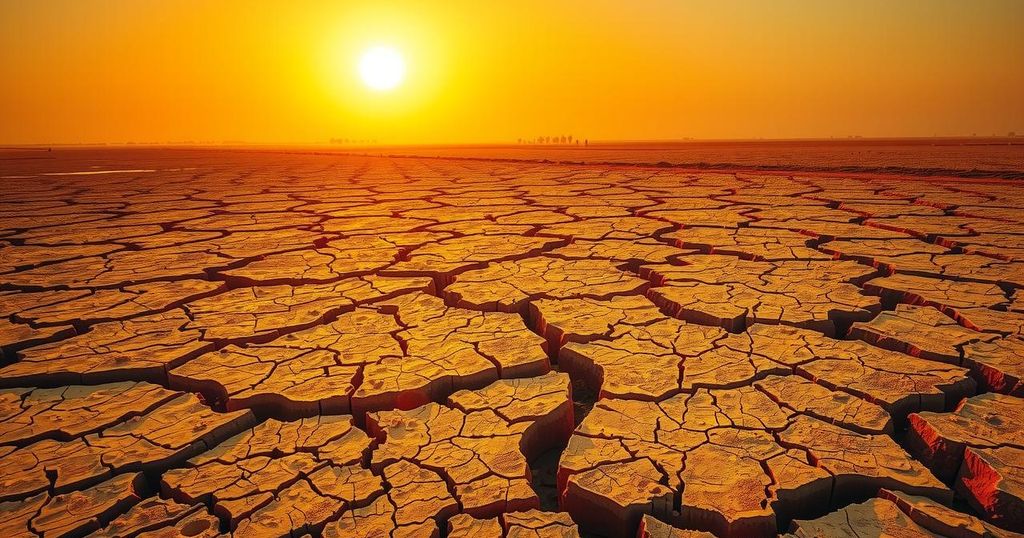Northern India Faces Early Heatwave with Severe Temperature Predictions

Northern India is facing an early heatwave, with temperatures expected to exceed 40°C. The IMD has issued a yellow alert, signaling moderate health risks. Recent shifts in climate are causing heatwaves to arrive earlier, and significant health concerns could arise, especially for vulnerable populations. Authorities stress the need for preventive measures for the anticipated extreme heat.
In early April, northern India is preparing for severe temperatures as the Indian Meteorological Department (IMD) forecasts a heatwave, specifically affecting the capital, Delhi, and surrounding regions including Haryana, Punjab, Rajasthan, and Gujarat. Maximum temperatures are predicted to surpass 40°C, prompting a yellow alert, which indicates that while the heat is manageable for most, it poses health risks for vulnerable populations such as infants, the elderly, and those with chronic health conditions.
Typically, northern India faces heatwaves from April to June; however, climate change has shifted the timelines, resulting in the advent of extreme heat much earlier. As stated by the IMD, temperatures in Delhi could reach up to 41°C, having already recorded 38.2°C last Sunday. Citizens are advised to mitigate exposure by dressing in lightweight clothing and utilizing umbrellas or cloths for head coverage when outdoors.
IMD chief Mrutyunjay Mohapatra highlighted that an intense heatwave is forecast for this summer with substantial temperature elevations across numerous regions. Areas like Uttar Pradesh, Jharkhand, Chhattisgarh, and Odisha may experience 10 to 11 intense heatwave days. He noted the expectation of two to four additional days of heatwaves compared to normal between April and June this year, marking a shift in weather patterns.
Mahesh Palawat, a meteorology expert from Skymet, indicated that northern India is transitioning straight from winter to summer, diminishing the spring season. This trend is linked to climate change, leading to stagnating wind speeds and clear skies, subsequently raising temperatures. Last year, India experienced its highest recorded temperature of 50.5°C in Rajasthan, alongside over 40,000 suspected heatstroke cases.
While one weather station in Delhi noted a maximum temperature of 52.9°C in May, the government later attributed this to a sensor error, adjusting it down by 3°C. Official statistics reveal nearly 150 fatalities attributed to heatwaves in 2024, yet independent research suggests significantly higher tolls.
The article elaborates on the impending heatwave in northern India, highlighting health risks, the impact of climate change on seasonal patterns, and temperature forecasts. Authorities are urging preventive measures to protect the vulnerable as temperatures significantly exceed normal levels for this time of year. The unusual patterns underscore the ongoing challenges posed by climate change, necessitating awareness and adaptation efforts among residents.
Original Source: www.bbc.com







